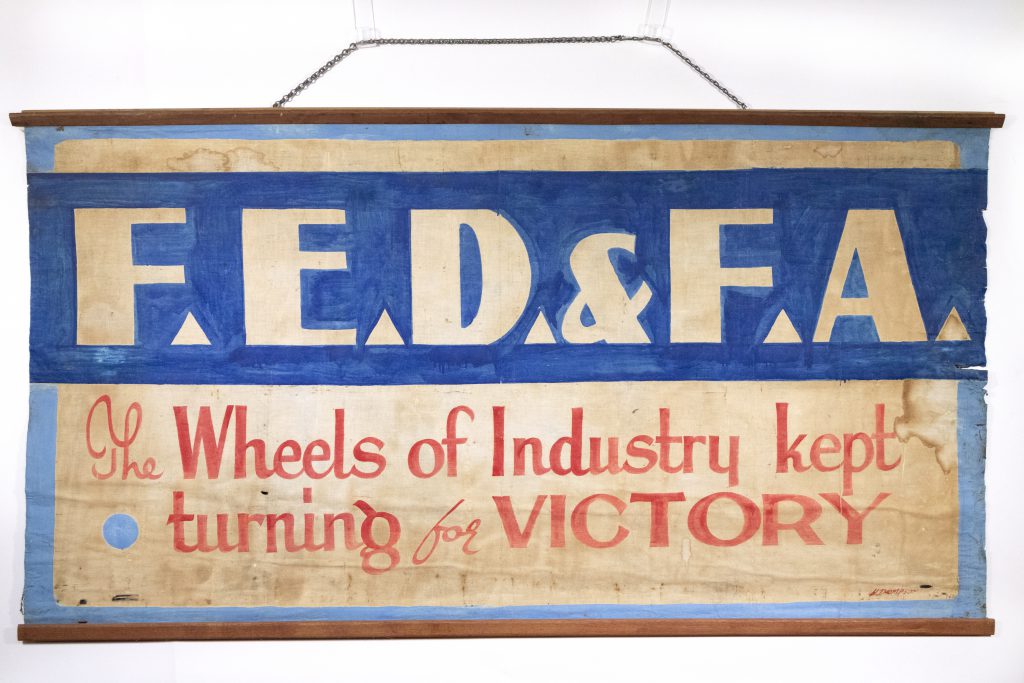
Broken Hill is known to the outside world as a stronghold of trade unionism, in addition to being the place where Australia’s first thirty-five hour week was granted. This reputation and milestone in the history of employment relations in Australia was the result of the historic strike action taken by miners in 1909 and 1919 […]
Read More…
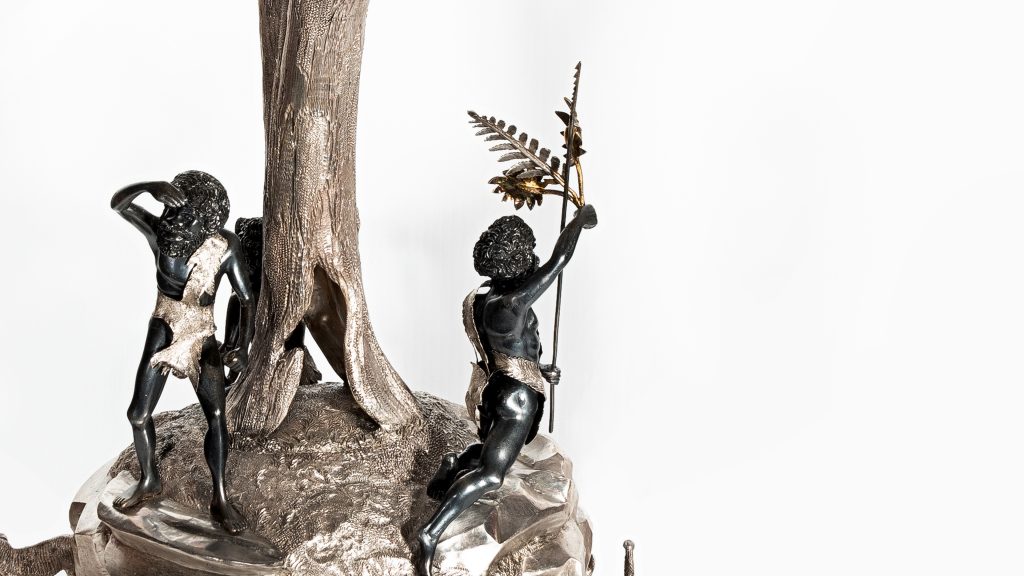
Designed by renowned colonial silversmith Henry Steiner (1835-1914), The Silver Tree epergne stands at more than half a metre high, features twenty figures on its base and has an illustrious history. It got tongues wagging at the Melbourne International Exhibition of 1880–81 and cemented Steiner’s place in Australian design history. Possibly lured by the gold […]
Read More…
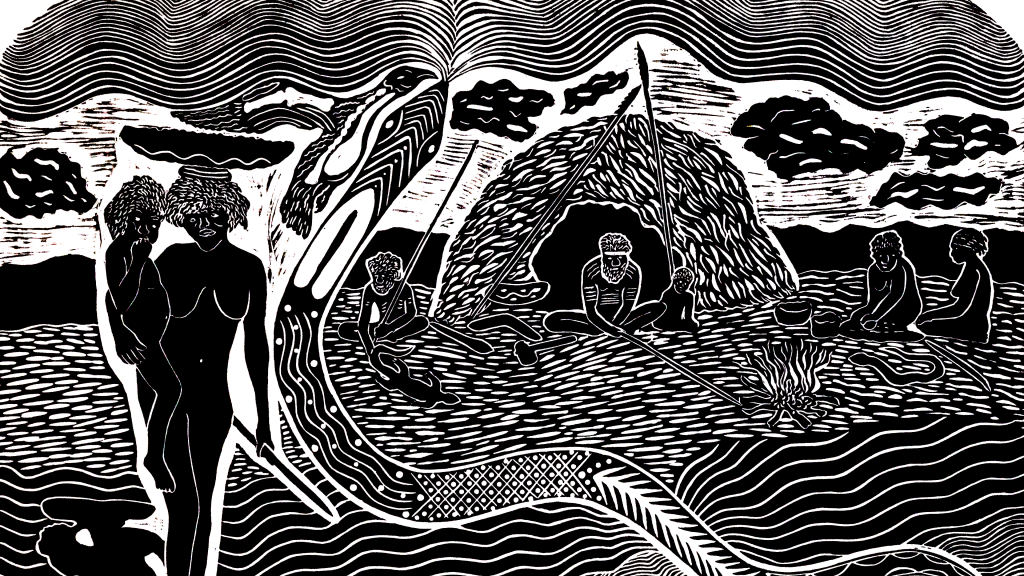
Artist and activist Badger Bates is a Barkandji elder from Wilcannia near the Barka (Darling) River in far western New South Wales. His people are river people and, as a result, much of his art focuses on the Barka and the people and animals that are dependent on its flow. Badger was born in 1947 […]
Read More…
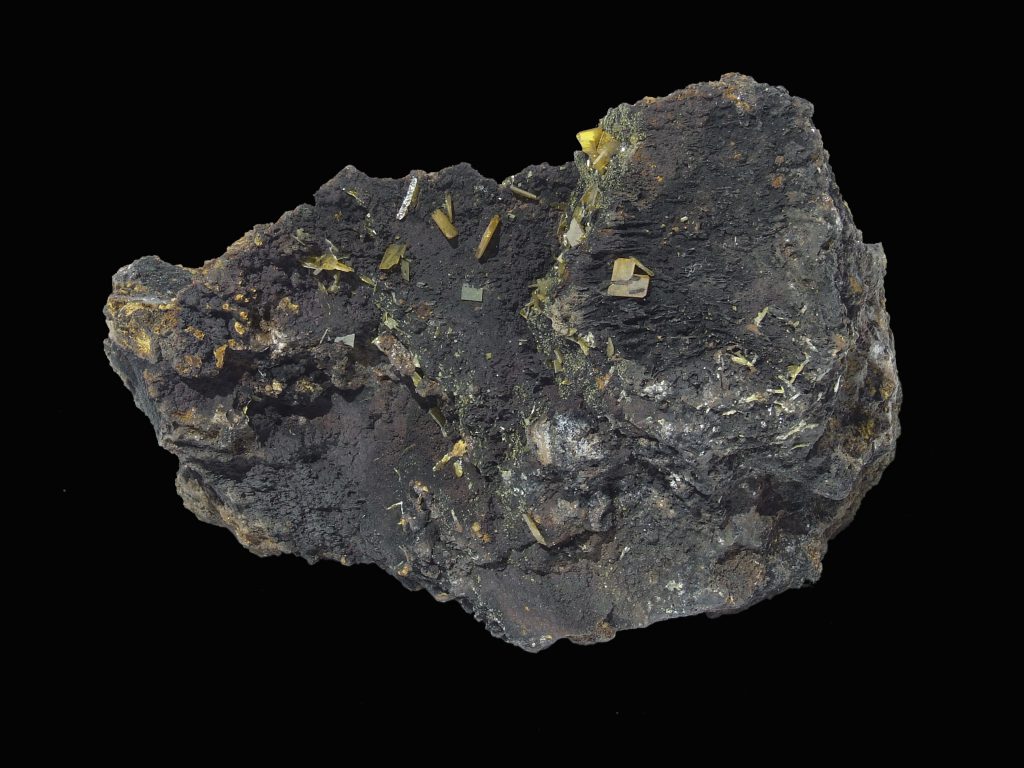
Raspite is recognised as a form of the lead tungstate mineral Stolzite and was named after the boundary rider and prospector, Charles Rasp, by the Natural History Museum in Vienna. Rasp’s 1883 claim on the Mount Gipps Station in New South Wales’ far west led to the founding of the Broken Hill Proprietary Company (BHP). […]
Read More…
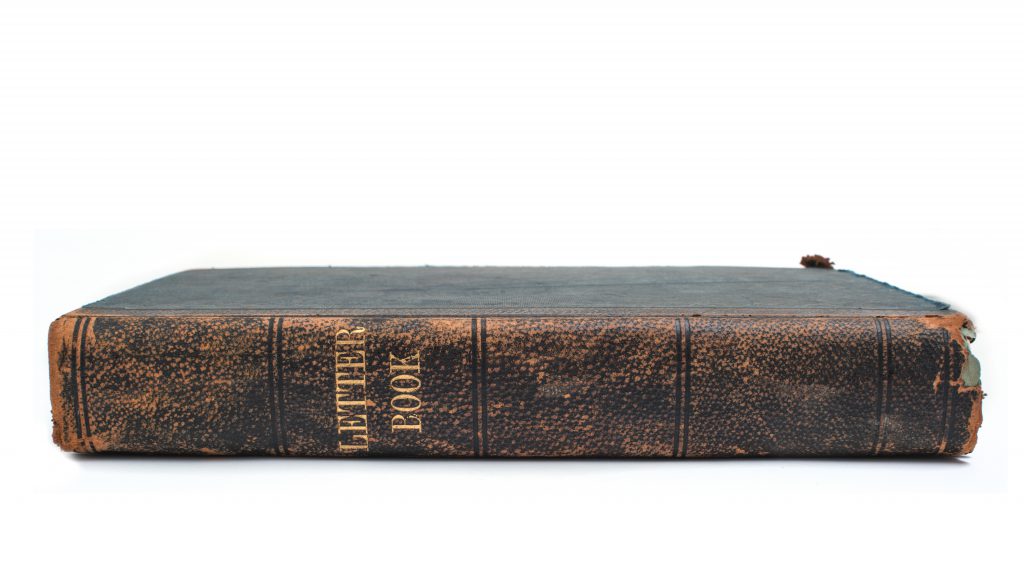
Tamworth was the first town and municipality in Australia, and the Southern Hemisphere, to install electric streetlights. The Veness Letter Book, pictured here, documents the unfolding story of this celebrated occasion. Installed in 1888, the electric streetlights replaced poor performing gas and kerosene lamps, which dimly lit the centre of town. The installation of electric […]
Read More…
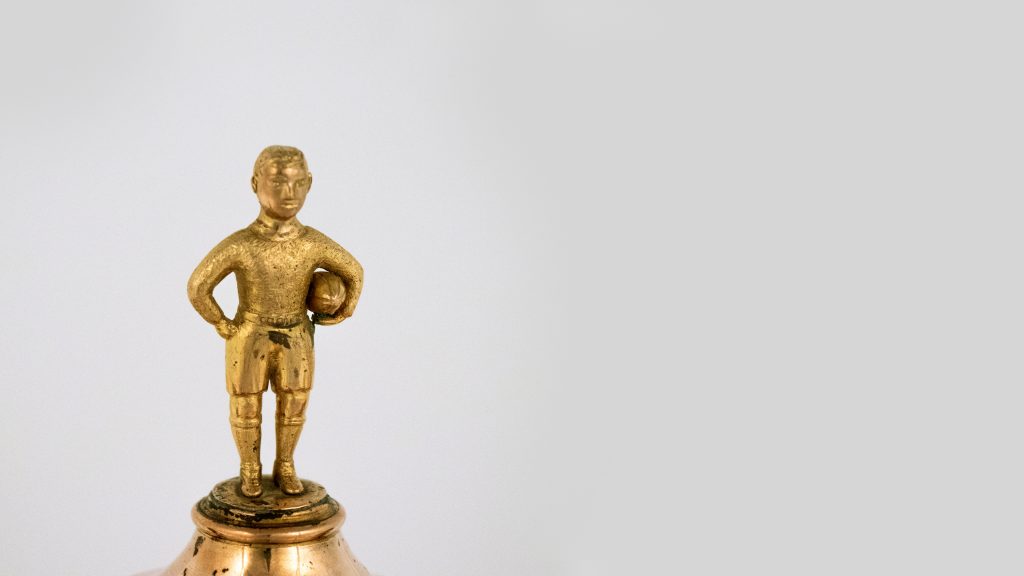
From 1926-1960 the Jack Hore Memorial Gold Cup rugby league competition was held in the state’s Central West. Clubs within sixty-five miles of the Canowindra Post Office were eligible to compete. The death of Canowindra’s young star-sportsman Jack Hore (1900-1926), at twenty six from meningitis, triggered the competition and the making of the cup. The […]
Read More…
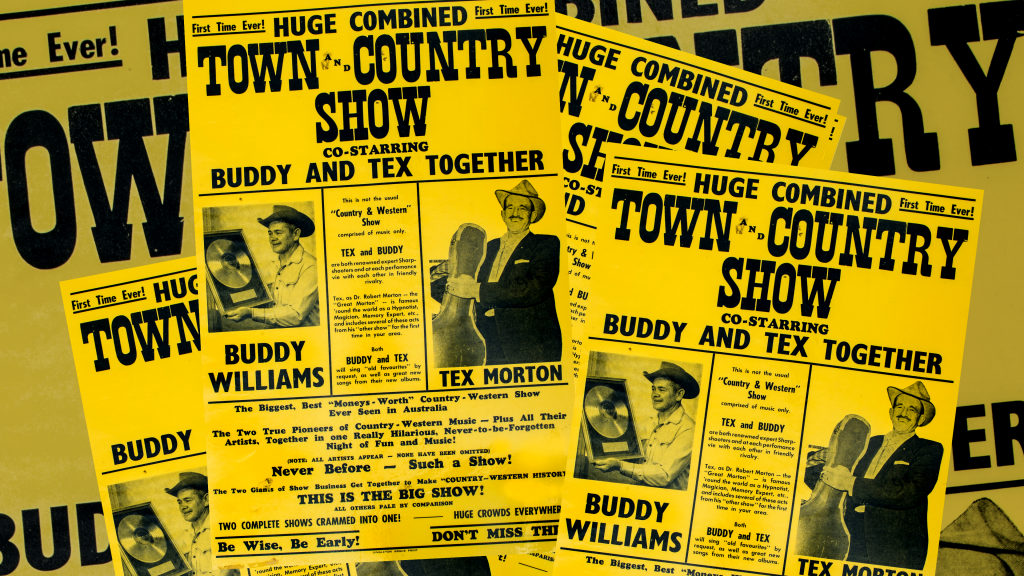
Tex Morton (1916-1983) and Buddy Williams (1918-1986) are known as the fathers of Australian country music. Throughout their long careers the two stars collaborated on one occasion only – a 1972 Australian tour. As teenagers they began performing and their rise to fame was swift. American country and blues music inspired and informed their early […]
Read More…
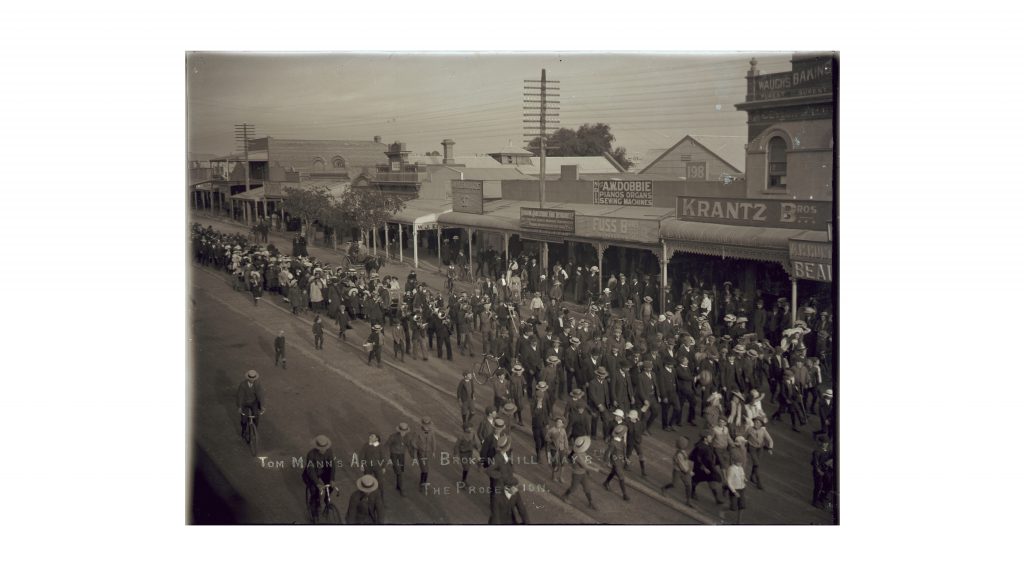
Armed with just three years of schooling, British socialist Tom Mann became a globally influential union organiser during the early 1900s. When living in Australia he spent time on the historic 1909 picket lines at Broken Hill. His influence and time in the mining-town was documented by several local photographers, including James Wooler and the […]
Read More…
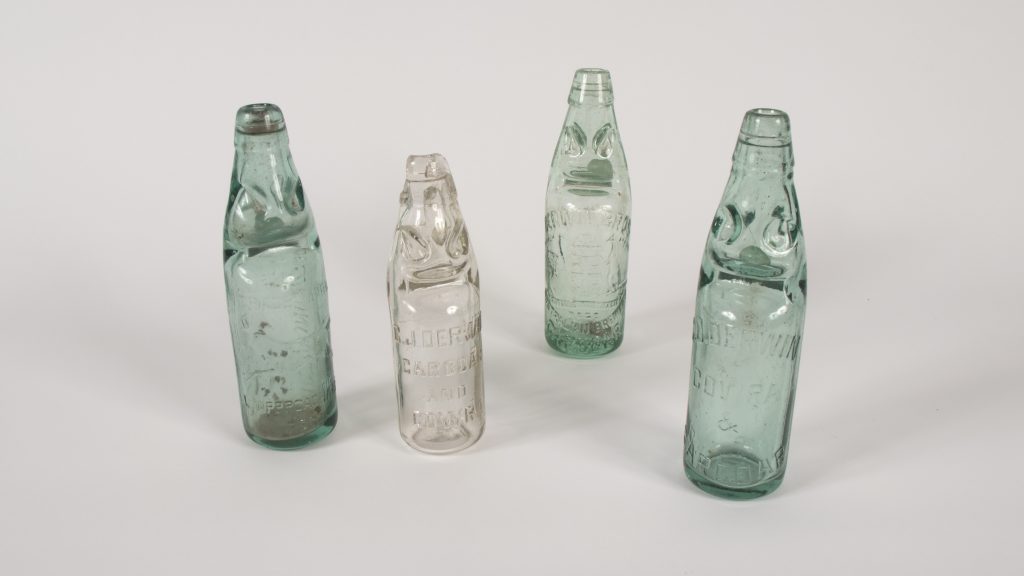
To meet the growing demand for cordial and fizzy drinks, soft-drink factories established in many NSW towns and villages in the second half of the nineteenth century. The glass and ceramic bottles shown here were used by Heavener (later Ashelfords) of Blayney, Bathurst and Lithgow; and the Derwin Bros. at Carcoar and Cowra. They illustrate […]
Read More…
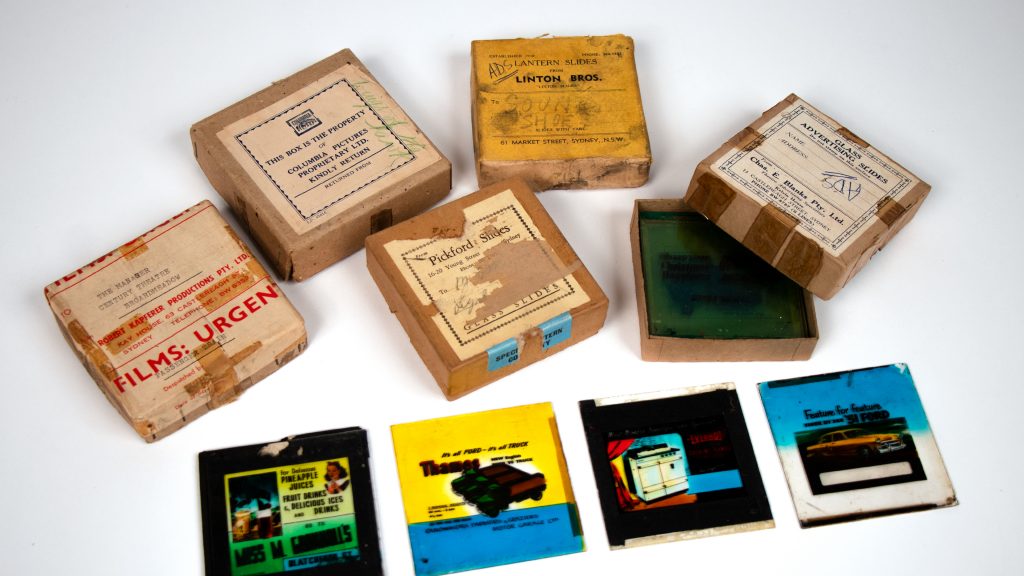
Along with ice-cream, advertising has been a mainstay of the cinema experience in Australia. Indeed, as soon as the large movie screen appeared it was used for promotion, and cinema advertising quickly became an important revenue stream for operators. In the 1950s, and before the main feature movie, these colourful, or ‘talkie’, slides were shown […]
Read More…











